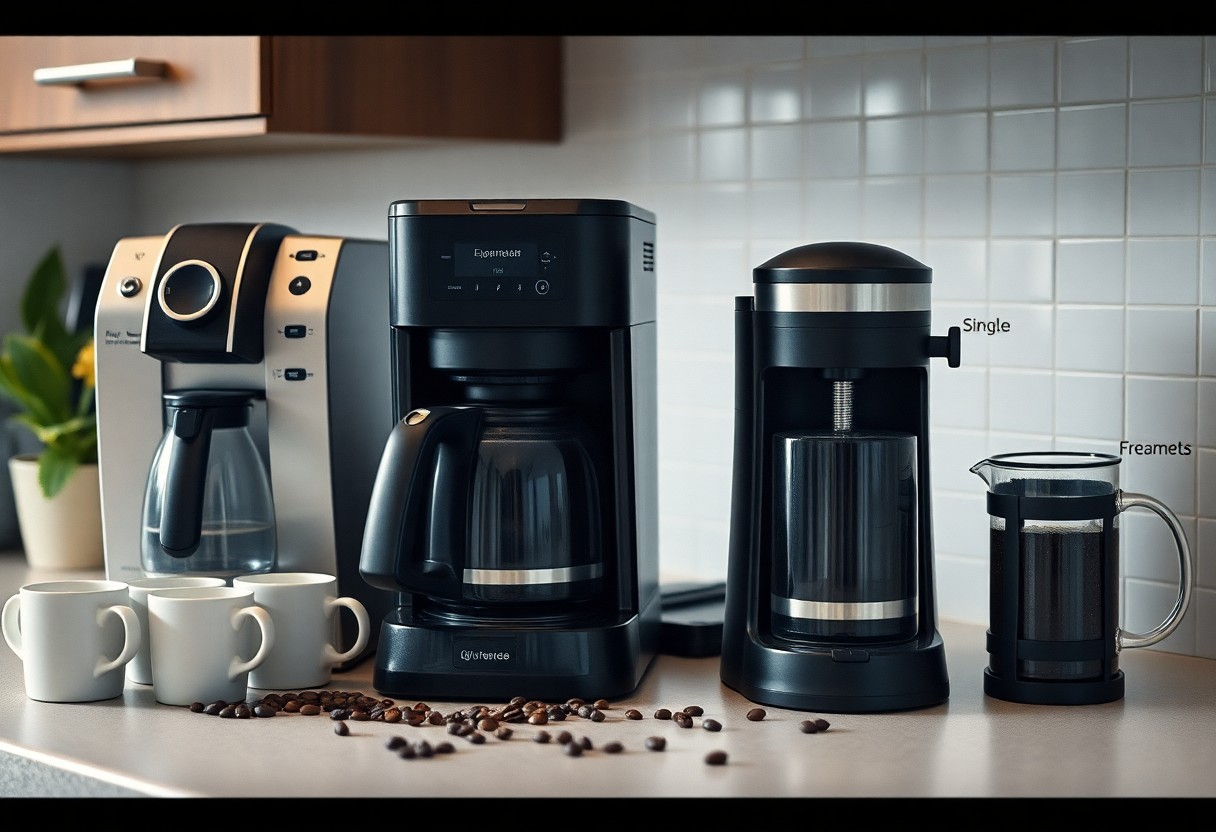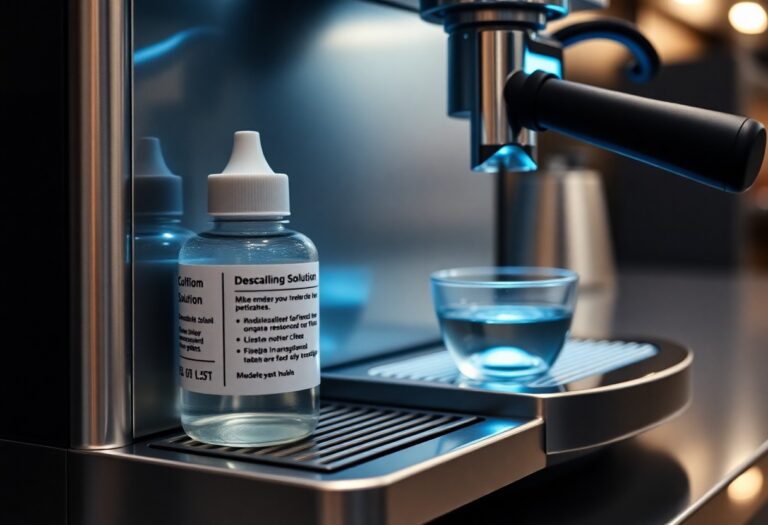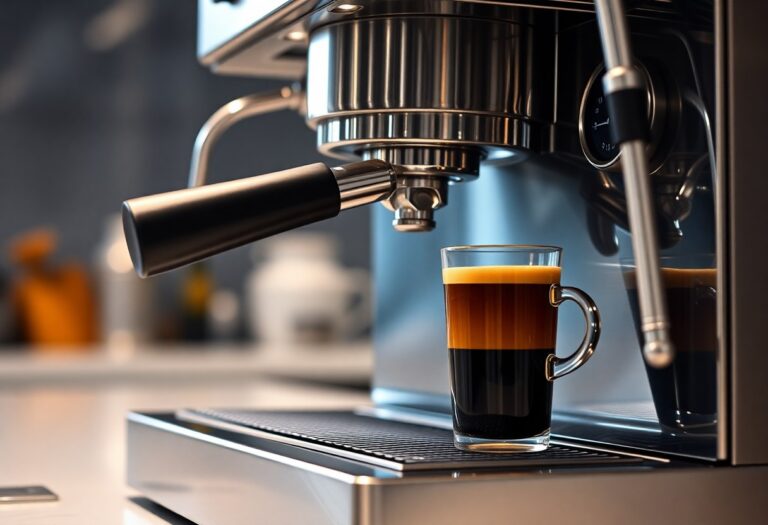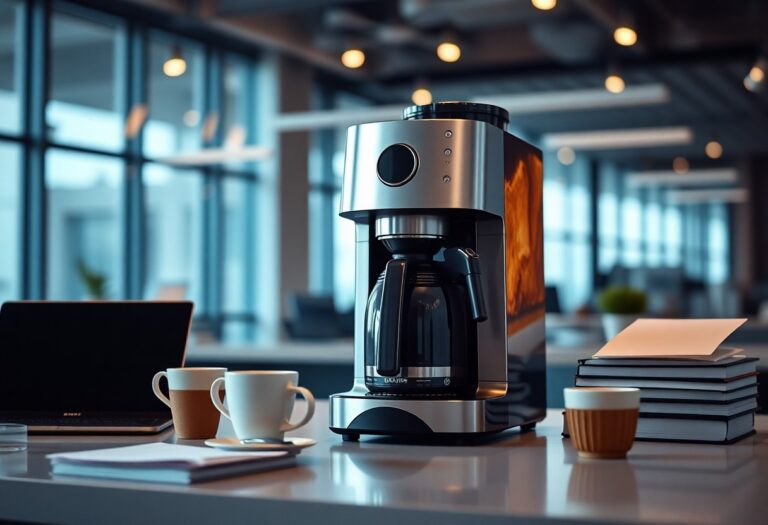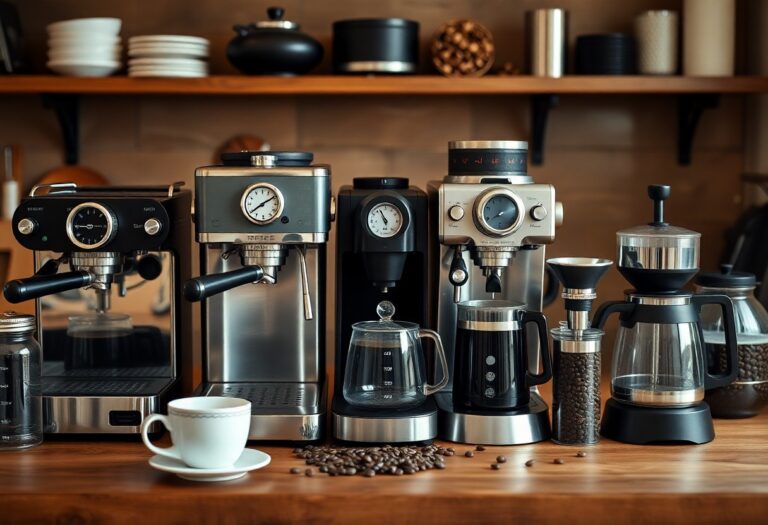What Type of Coffee Machine to Buy – Category Guide
Most coffee lovers face the dilemma of choosing the right coffee machine for their needs. With so many options available, it can be overwhelming to sift through various types, each with its own features and benefits. Whether you prefer a simple drip coffee maker or a sophisticated espresso machine, understanding the differences is key to enhancing your coffee experience. As you look into this guide, gain insights that can save you from regretful purchases. To make a well-informed decision, discover which type of coffee machine is right for you.
Key Takeaways:
- Identify your brewing preference: Different machines cater to specific styles like espresso, drip, or single-serve.
- Consider the size and capacity: Choose a machine that fits your kitchen space and accommodates your typical coffee consumption.
- Evaluate ease of use and cleaning: Look for user-friendly designs and maintenance features that suit your lifestyle.
- Assess your budget: Coffee machines vary widely in price, so determine what you’re willing to spend before shopping.
- Explore additional features: Some machines offer customizable settings, built-in grinders, and milk frothers, enhancing your coffee experience.
Demystifying Coffee Machine Mechanisms
Understanding how different coffee machines work can significantly enhance your brewing experience. From the intricate mechanics of an espresso machine to the straightforward operation of a drip coffee maker, grasping these mechanisms can help you choose a machine that perfectly matches your taste preferences and lifestyle. The technology behind each type plays a role in the flavor, strength, and texture of your coffee, allowing you to enjoy your favorite brew just the way you like it.
Espresso Machines: The Art of Perfection
Espresso machines are all about precision and craftsmanship. These machines use high pressure to force hot water through finely ground coffee, producing a rich and flavorful shot. With options ranging from manual lever machines to fully automatic ones, each offers a unique way to unlock the complex flavors in your beans, making your daily caffeine fix an artful experience.
Drip Coffee Makers: The Everyday Essential
Drip coffee makers provide a simple and effective way to brew your morning cup. These machines work by heating water and dripping it over coffee grounds, allowing for consistent flavor extraction. Their ease of use and reliability make them a staple in most kitchens, capable of producing multiple cups at a time, perfect for accommodating busy mornings.
Features to look for in drip coffee makers include programmable settings, auto shut-off for safety, and a built-in grinder for fresh grounds. Some models can brew between 4 to 12 cups, making them versatile for both solo sippers and families alike. Investing in a quality drip coffee maker can elevate your daily routine, providing you with a convenient and delicious coffee experience every time.
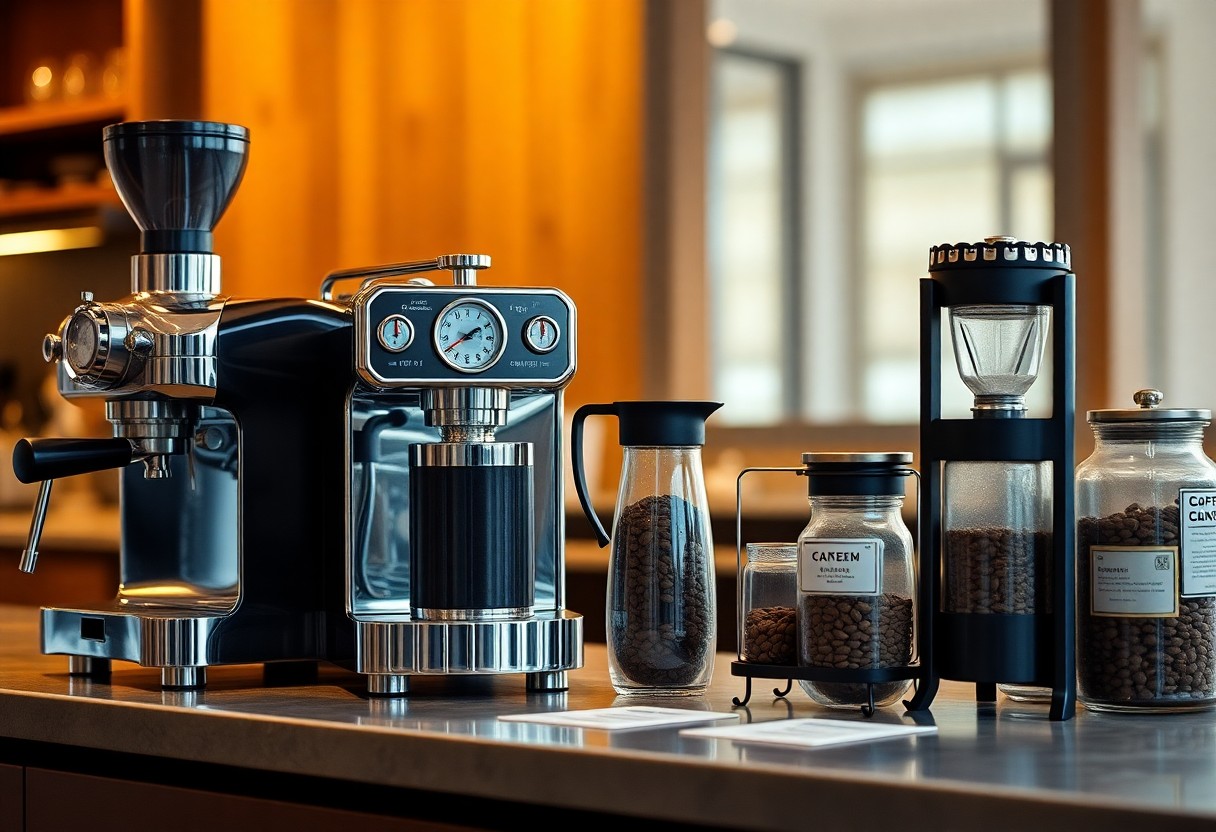
Specialty Brew Techniques Bringing Barista Skills Home
Bringing specialty brew techniques home transforms your everyday coffee experience into a delightful ritual. With a little practice, you can master methods that rival your favorite café. From precision pour-overs to the rich, full-bodied flavors of cold brews, each technique allows you to unlock unique taste profiles, putting you in control of your brew. Choosing the right tools and understanding the nuances of water temperature, grind sizes, and extraction times will elevate your coffee game significantly, allowing you to craft exquisite cups in the convenience of your kitchen.
French Press and Pour Over: Crafting the Perfect Cup
Using a French press or pour-over method enables you to create a personalized coffee experience, emphasizing the flavor notes specific to your coffee beans. French presses produce a rich, velvety texture by steeping the grounds directly in hot water. On the other hand, pour-over techniques, like those using the Hario V60 or Chemex, involve a slow and deliberate brewing process that highlights brightness and complexity. Both methods give you control over variables like brew time and water temperature, allowing you to fine-tune your cup to match your unique taste preferences.
Cold Brew Systems: Unlocking New Flavors
Cold brew systems offer a refreshing way to enjoy coffee, bringing out softer, sweeter flavors. By steeping coarsely ground coffee in cold water for 12-24 hours, you extract less acidity and bitterness, producing a smooth concentrate that’s perfect for sipping over ice or mixing into cocktails. Many systems, such as the Takeya or OXO cold brew makers, simplify the process, making it accessible for beginners. Explore various brew ratios and steeping times for different flavor profiles, or infuse your cold brew with herbs and fruits for a custom drink that surprises and delights your palate.
Cold brew systems not only simplify the brewing process but also yield a unique and flavorful coffee experience. The extended steeping process extracts the sweetness from the coffee beans without the harsh notes often present in traditional hot brews. By adjusting the coffee-to-water ratio and experimentation with different bean origins or roast levels, you can discover a diverse range of flavors, from chocolatey and nutty to fruity and floral. The versatility of cold brew also allows you to serve it straight, with milk or cream, or even as a base for refreshing coffee cocktails, making it a worthwhile addition to your home brewing arsenal.
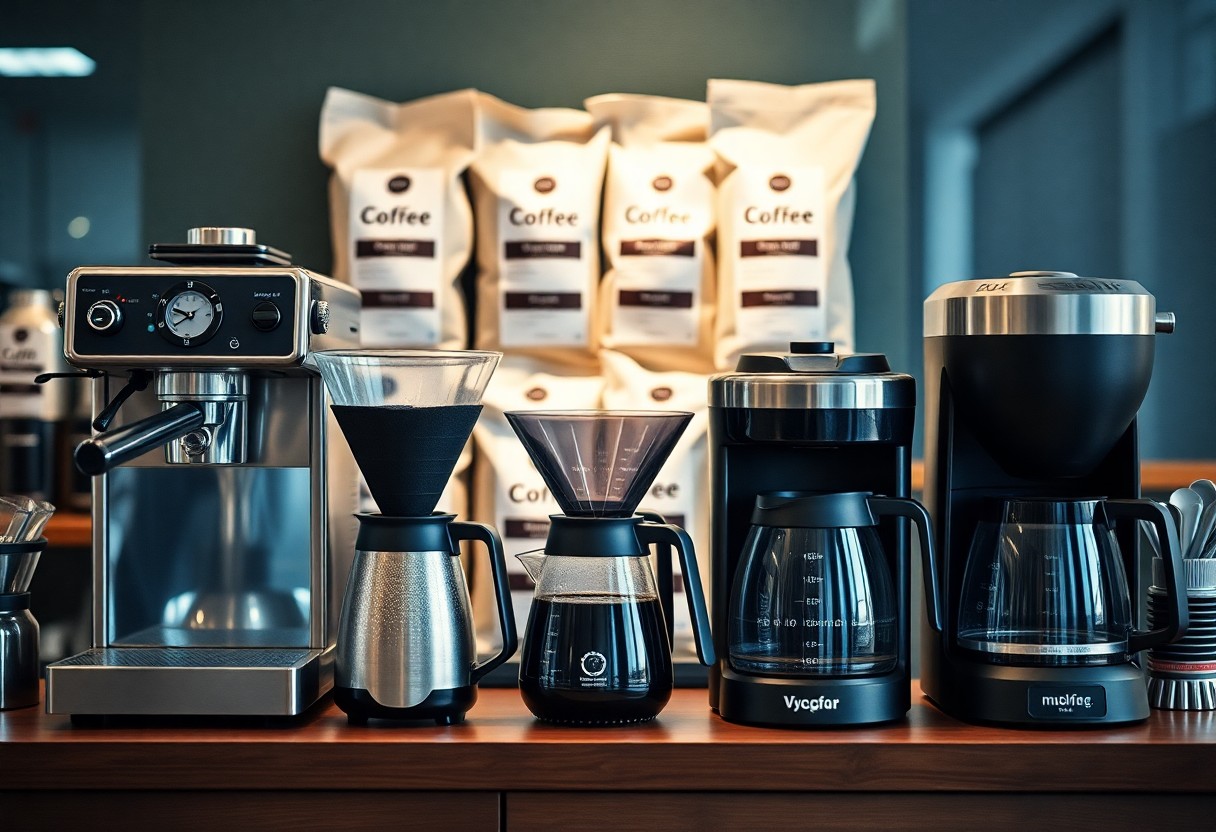
The Role of Technology in Coffee Brewing
Modern advancements in coffee brewing technology have transformed the way you enjoy your daily cup. Today’s machines incorporate precision temperature control, programmable settings, and even smartphone connectivity, making it easier than ever to achieve the perfect brew at home. For more information on various types of coffee machines, check out this 8 Types of Coffee Makers: An Expert Guide.
Smart Coffee Makers: Convenience Meets Quality
Smart coffee makers are redefining convenience, allowing you to control your brewing process remotely. Many models are equipped with integrated Wi-Fi, enabling you to schedule your morning brew from your smartphone or even customize your coffee preferences through an app. This technology not only saves time but also enhances the quality of your coffee by providing consistent brewing parameters on demand.
Grinder Quality: The Often Overlooked Component
Many coffee enthusiasts often overlook the importance of the coffee grinder in the brewing process. The grinder directly impacts the flavor extraction and, ultimately, the quality of your cup. A consistent grind size is vital for achieving balanced extraction, and investing in a high-quality burr grinder ensures uniformity, allowing you to taste the nuanced flavors in your favorite beans.
Investing in a quality grinder can elevate your coffee experience significantly. Blade grinders, while more affordable, tend to produce uneven grinds, resulting in over-extraction and bitter flavors. A good burr grinder, on the other hand, delivers consistent particle size, vital for producing well-rounded tastes. Not only does careful grinding improve extraction, but it also enhances aroma—vital for an engaging coffee ritual. By prioritizing grinder quality, you wield greater control over the brewing process, leading to a more delightful outcome in every cup.
Budget Considerations: Getting the Most Bang for Your Buck
Your budget plays a pivotal role in selecting the right coffee machine, balancing quality and affordability. Assess what features are non-negotiable and which ones can be compromised. Entry-level machines usually range between $30 to $150, ideal for occasional drinkers. However, investing a bit more—between $200 and $1,500—on high-end models can significantly enhance brewing quality, durability, and functionality, allowing you to experiment with various coffee types and styles.
Entry-Level vs. High-End Machines: What’s the Difference?
Entry-level machines provide basic functionalities, typically offering simple brewing methods without much control over temperature or grind size. In contrast, high-end machines come equipped with advanced features such as built-in grinders, programmable settings, and precise temperature control, allowing you to refine your brewing techniques. The difference is evident in the quality of your coffee; while entry-level options can suffice for beginners, high-end models cater to passionate coffee enthusiasts seeking to achieve café-quality brews at home.
Long-Term Costs: Maintenance and Accessories
Long-term costs associated with coffee machines extend beyond the initial purchase price. Maintenance and accessories can add up over time. Consider regular expenses like descaling solutions, coffee filters, and water filters, which can total anywhere from $50 to $150 annually. Additionally, high-end machines may require occasional repairs or professional servicing, which can amount to several hundred dollars. Weigh these factors against the machine’s longevity and overall performance to gauge its true value.
Factoring in long-term costs becomes necessary when assessing your coffee machine investment. For instance, a high-end espresso machine demands regular maintenance, such as descaling every three months and cleaning the group head, which can incur costs. Accessories like high-quality coffee grinders, milk frothers, or specialty beans can also accumulate expenses. Calculating these costs over several years will better help you understand the total investment. A machine priced higher initially but with low maintenance costs might turn out to save you more in the long run than a cheaper alternative that needs frequent replacements or repairs.
Finding Your Unique Coffee Preferences
Defining your coffee preferences can significantly influence your machine choice, enabling you to craft brews that resonate with your palate. Exploring various flavors, intensities, and brewing methods empowers you to pinpoint your ideal coffee experience. You may find that you gravitate toward smooth, fruity profiles or prefer rich, bold flavors. Additionally, understanding your favorite brewing styles—be it espresso, drip, or French press—further narrows down the options, ensuring you invest in a machine that aligns perfectly with your taste.
Flavor Profiles: Matching Machines to Tastes
Your preferred flavor profile greatly informs the type of coffee machine you should consider. If you enjoy sweet, fruity nuances, a pour-over or siphon brewer might be the best fit, as these methods highlight bright acids and complex flavors. Alternatively, if you lean towards earthy, chocolatey tones, a French press or espresso machine may deliver the rich, robust flavors you crave. Researching different brewing techniques and how they affect your coffee’s taste can guide you toward the right equipment.
User Experience: Ease of Use vs. Customization
The balance between ease of use and customization plays a pivotal role in your coffee-making experience. Some machines offer one-touch brewing for those who prefer convenience, while others provide intricate settings for those wanting to fine-tune their brew. Consider how much time you’re willing to invest in the coffee-making process. If you relish tinkering with grind sizes and brew temperatures, a more advanced machine may serve you well. However, if your priority is a quick cup each morning, opt for user-friendly models designed for efficiency.
Ease of use often means simplified design and quick brewing capabilities, making it a popular choice for busy mornings. However, machines that emphasize customization allow for personal adjustments, letting you experiment with flavors and intensities to achieve the perfect cup. For example, a semi-automatic espresso machine could offer the best of both worlds: you make critical decisions like the grind size and extraction time while still enjoying the streamlined process that comes with an electric appliance. Ultimately, your choice should reflect your daily routine, coffee knowledge, and desire for personalization.
Conclusion
With this in mind, choosing the right coffee machine for your needs involves considering factors such as brewing methods, frequency of use, and your budget. Whether you opt for a drip, espresso, or single-serve machine, understanding the various categories will help you make an informed decision. By assessing what fits best with your lifestyle and preferences, you can enjoy the perfect cup of coffee tailored to your taste. Take your time to research and select a machine that elevates your coffee experience.
FAQ
Q: What are the main types of coffee machines available in the market?
A: The main types of coffee machines include drip coffee makers, espresso machines, single-serve pod machines, French presses, and pour-over brewers. Drip machines are great for brewing large quantities, while espresso machines cater to those who enjoy rich, concentrated coffee. Single-serve machines offer convenience and speed, ideal for those with a busy lifestyle. French presses provide a full-bodied brew, and pour-over methods allow for controlled brewing, emphasizing flavor profiles.
Q: How do I determine which coffee machine is best for my needs?
A: Consider your coffee preferences, the number of servings you need, and your brewing habits. If you enjoy strong coffee and are willing to learn, an espresso machine might be for you. If you typically brew coffee for multiple people, a drip coffee maker could be more suitable. Evaluate factors like ease of use, desired features (like built-in grinders or programmability), and budget to find the perfect match.
Q: Are there any specific features I should look for in a coffee machine?
A: Yes, some important features to consider include brew strength settings, programmable timers, built-in grinders, and milk frothers. Brew strength settings allow you to customize the intensity of your coffee. Programmable timers enable you to set a brewing schedule. Built-in grinders can offer fresher coffee by grinding beans on demand, and milk frothers are imperative for those who enjoy lattes or cappuccinos.
Q: What is the difference between manual and automatic coffee machines?
A: Manual coffee machines require the user to control the brewing process, perfect for coffee enthusiasts who enjoy hands-on preparation. These machines often include espresso machines and pour-over setups. Automatic machines, on the other hand, simplify the process with preset functions that handle brewing and, in some cases, grinding. These are ideal for those who seek convenience and consistency in their coffee without extensive involvement.
Q: What is the investment range for various coffee machines, and is it worth it?
A: Coffee machines can range from around $20 for basic drip machines to over $1,500 for high-end espresso machines. The investment often corresponds to the complexity of the machine and the quality of coffee produced. If you are serious about your coffee experience and often drink several cups a day, investing in a higher-quality machine may lead to better flavor and overall satisfaction. In contrast, if you drink coffee occasionally, a lower-cost option may suffice.

